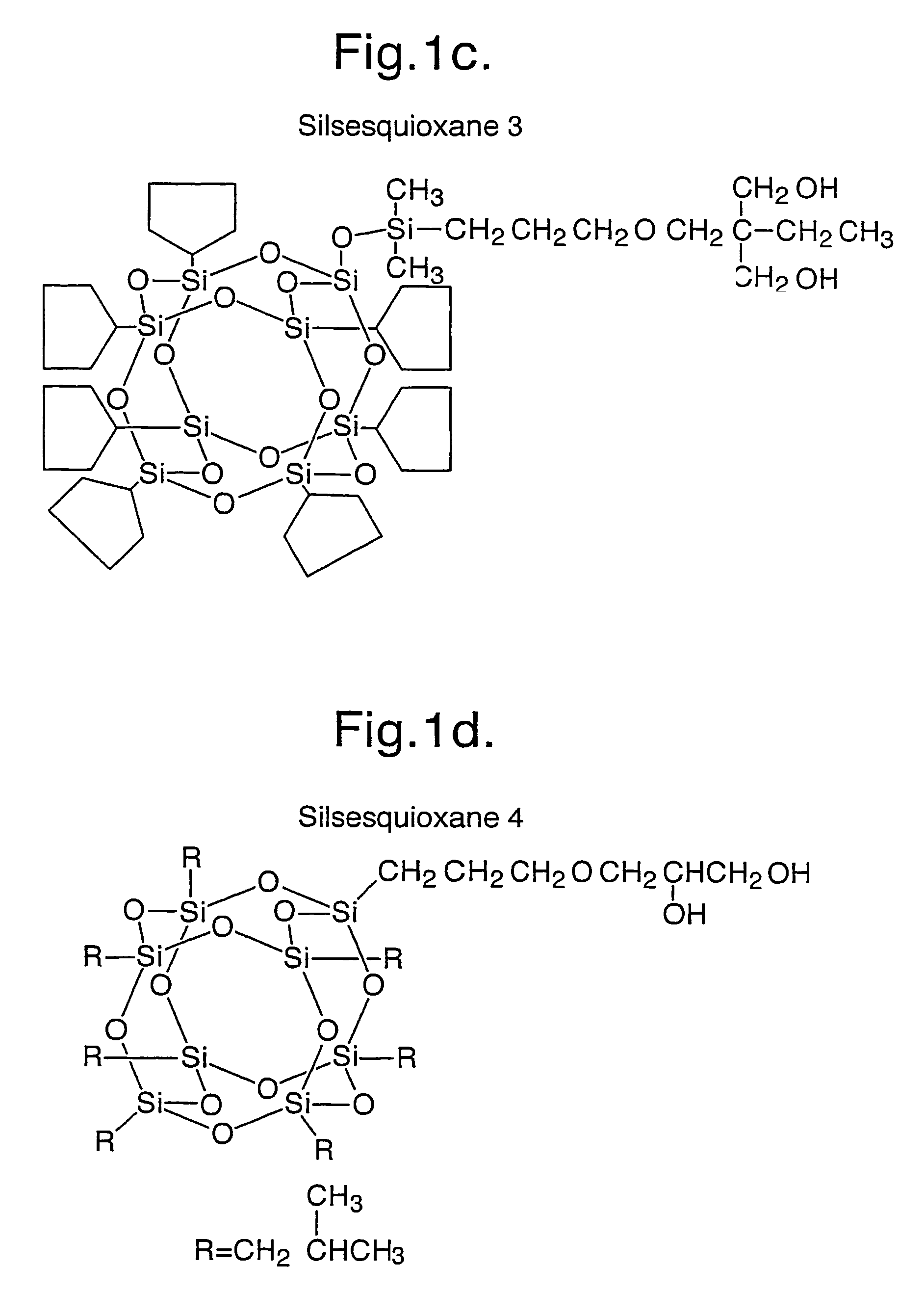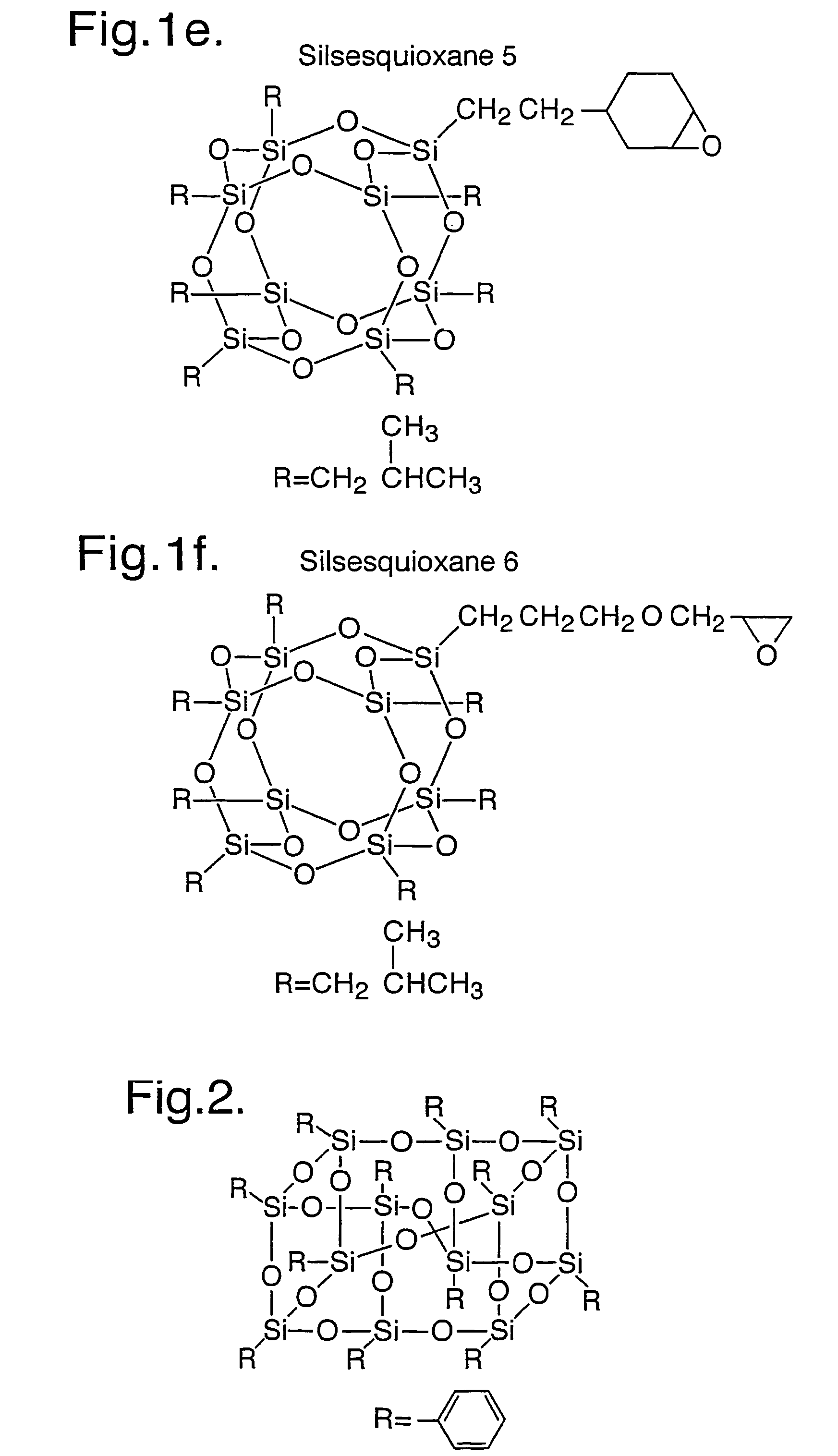Polymer for use in conduits, medical devices and biomedical surface modification
a technology of copolymer and conduit, which is applied in the field of copolymer, can solve the problems of poor compliance at the anastomosis, lack of adequate autologous vein in many patients, and loss of compliance, so as to improve the fatigue resistance of copolymer, improve biostability, and improve mechanical properties.
- Summary
- Abstract
- Description
- Claims
- Application Information
AI Technical Summary
Benefits of technology
Problems solved by technology
Method used
Image
Examples
example 1
[0312]A mixture of polycarbonate polyol (2000 MW) (36 g) and silsesquioxane 1 (see FIG. 1 and below) (1 g) were placed in a round bottomed flask equipped with a stirrer, thermometer, stoppers and outlet valve. The mixture was dehydrated by heating under vacuum (1 mm Hg) at 90° C.-110° C. with stirring. This step of the procedure ensures that the silsesquioxane is mixed into the polyol.
[0313]After 2 hours the temperature was allowed to fall to 70° C. The system was flushed with dry nitrogen. The top was removed and 4,4′-methylene bisdiphenyl diisocyanate (MDI) was added in one go. The flask top was replaced and the system flushed with dry nitrogen. The temperature was maintained between 75° C. and 85° C. by gentle heating for 2 hours. Dimethylacetamide (DMAC) was added to the system and, on complete dissolution of the reaction mixture in the DMAC, the flask was allowed to cool to room temperature.
[0314]The thus formed prepolymer was then chain extended with ethylene diamine using die...
example 1a
[0315]Example 1 was repeated using 2,4-methylene bisdiphenyl diisocyanate (MDI).
examples 2 to 6 and 2a to 6a
[0316]Examples 1 and 1a were repeated using silsesquioxanes 2 to 6 as depicted in FIG. 1.
PUM
| Property | Measurement | Unit |
|---|---|---|
| molecular weight | aaaaa | aaaaa |
| molar ratio | aaaaa | aaaaa |
| molecular weights | aaaaa | aaaaa |
Abstract
Description
Claims
Application Information
 Login to View More
Login to View More - R&D
- Intellectual Property
- Life Sciences
- Materials
- Tech Scout
- Unparalleled Data Quality
- Higher Quality Content
- 60% Fewer Hallucinations
Browse by: Latest US Patents, China's latest patents, Technical Efficacy Thesaurus, Application Domain, Technology Topic, Popular Technical Reports.
© 2025 PatSnap. All rights reserved.Legal|Privacy policy|Modern Slavery Act Transparency Statement|Sitemap|About US| Contact US: help@patsnap.com



